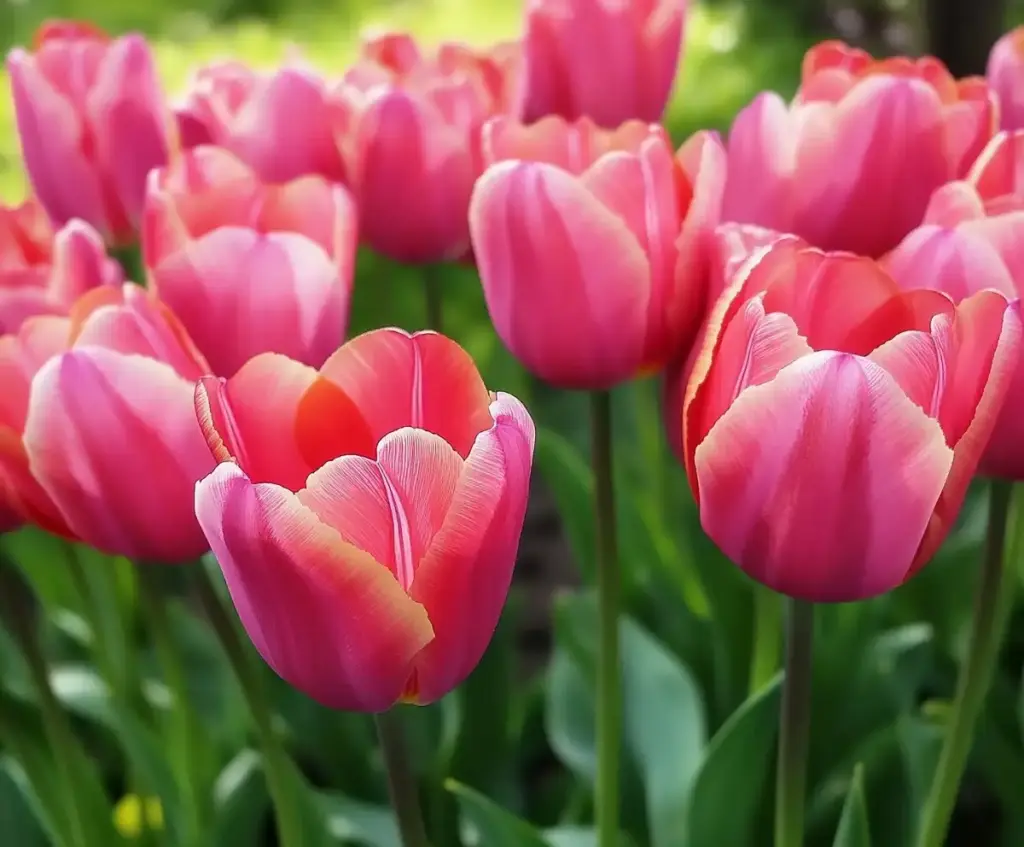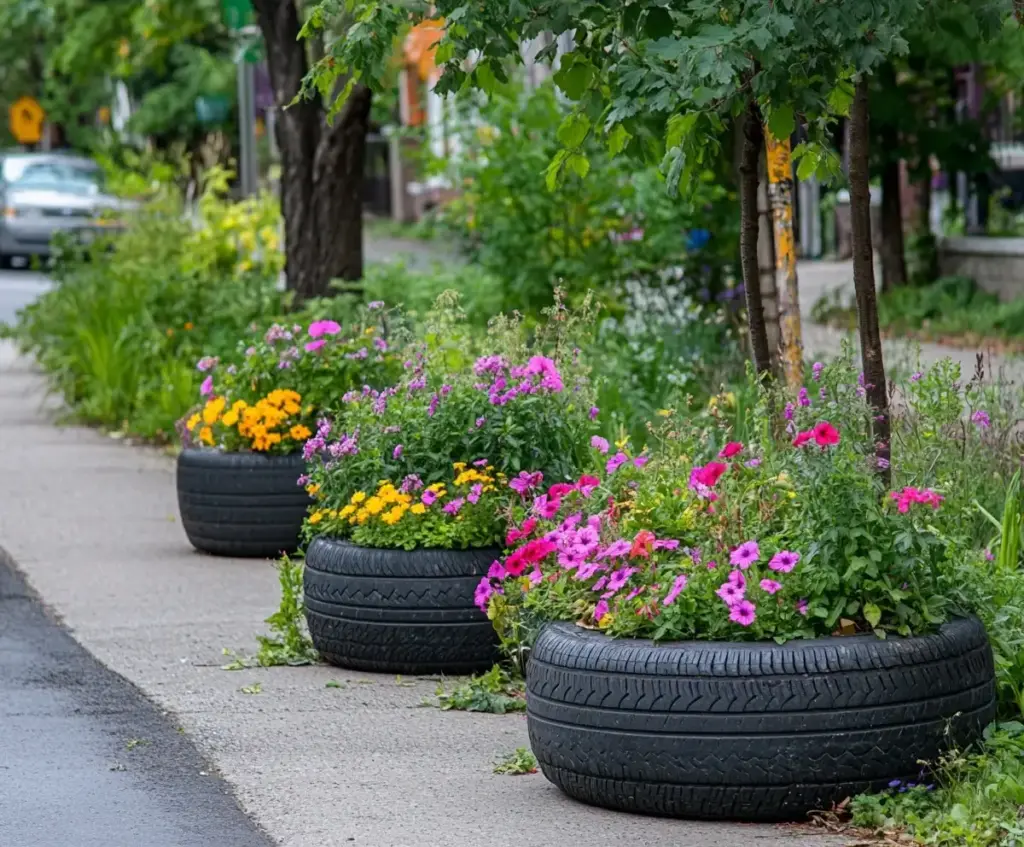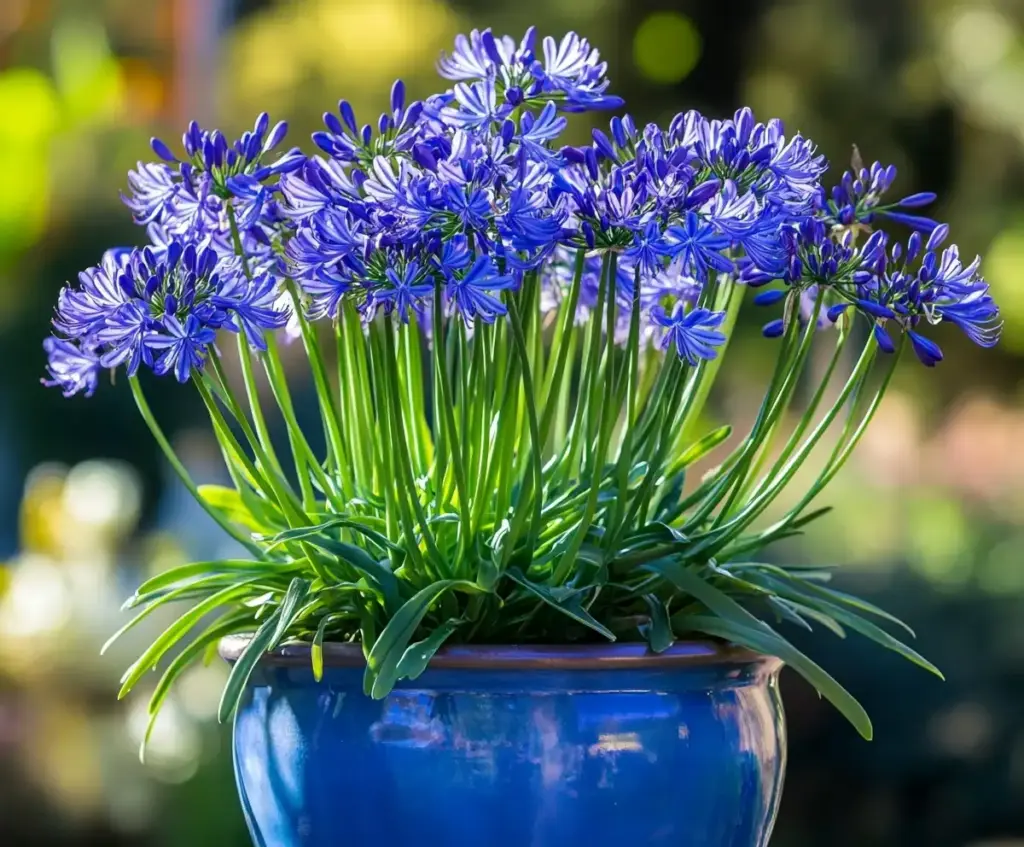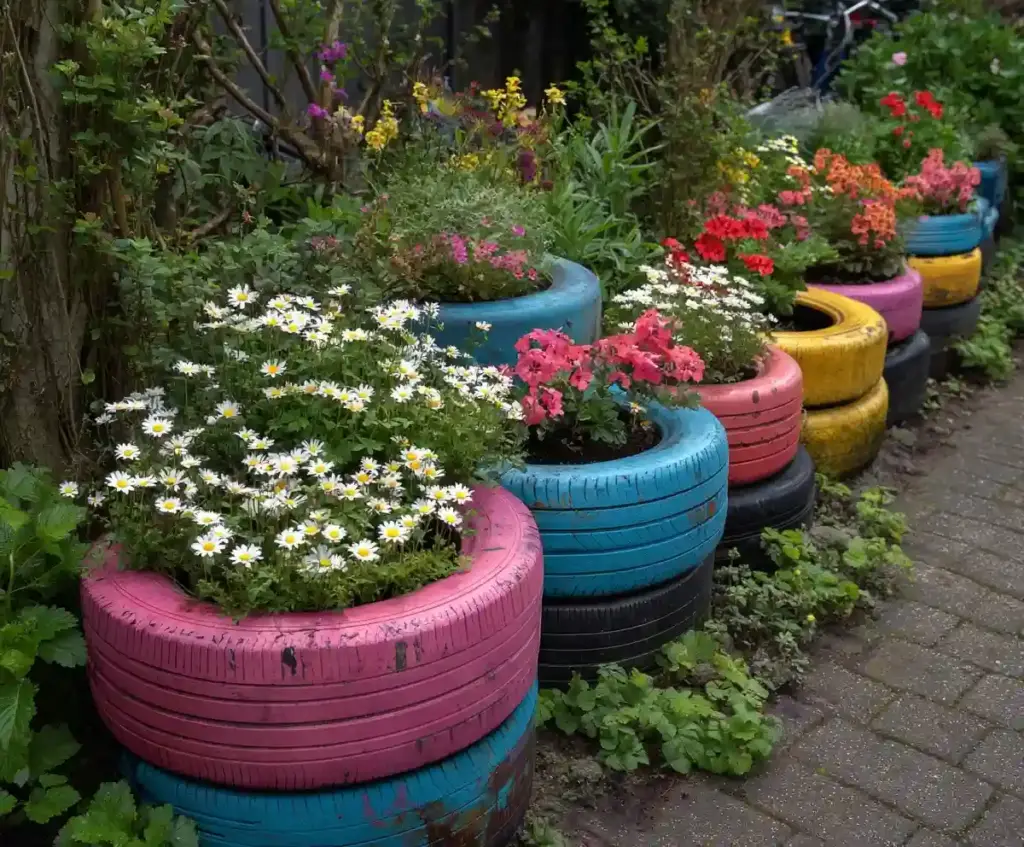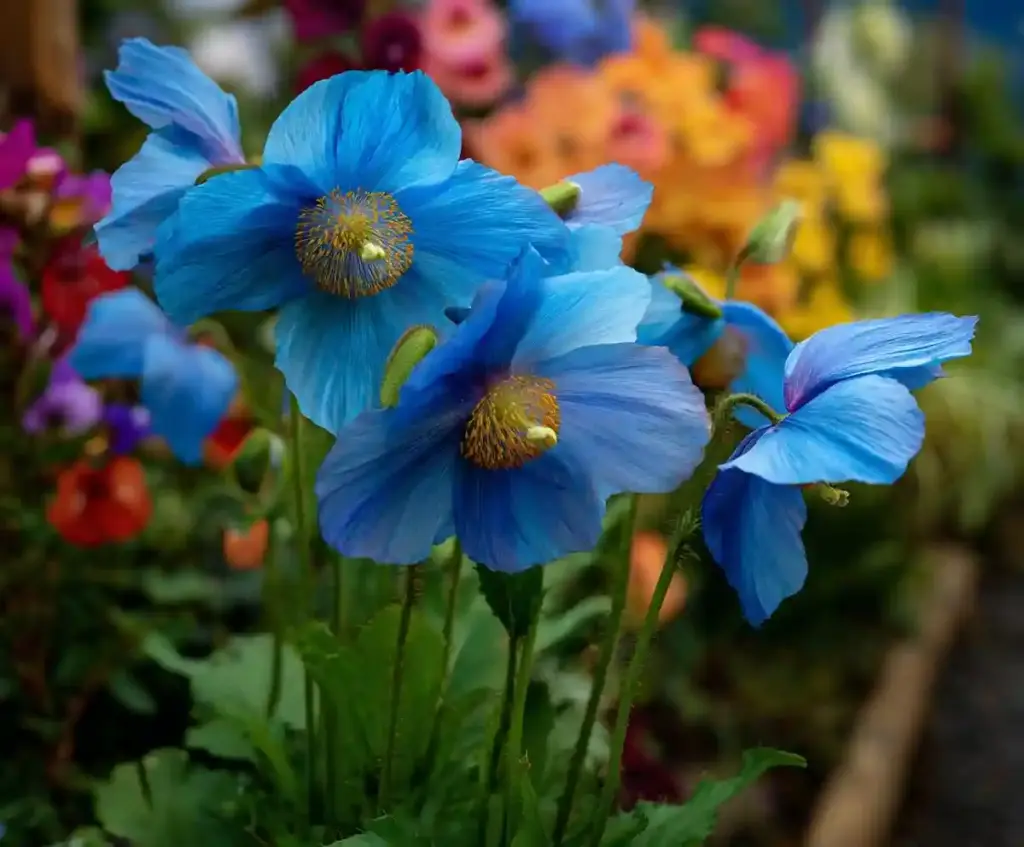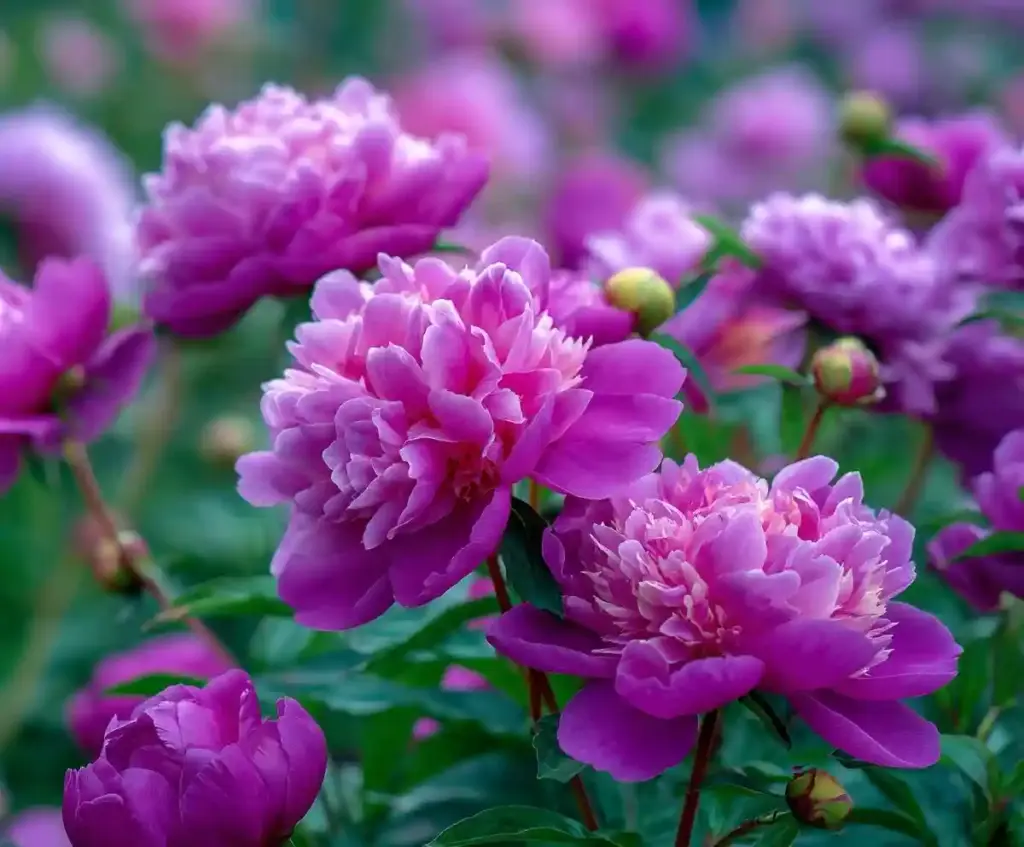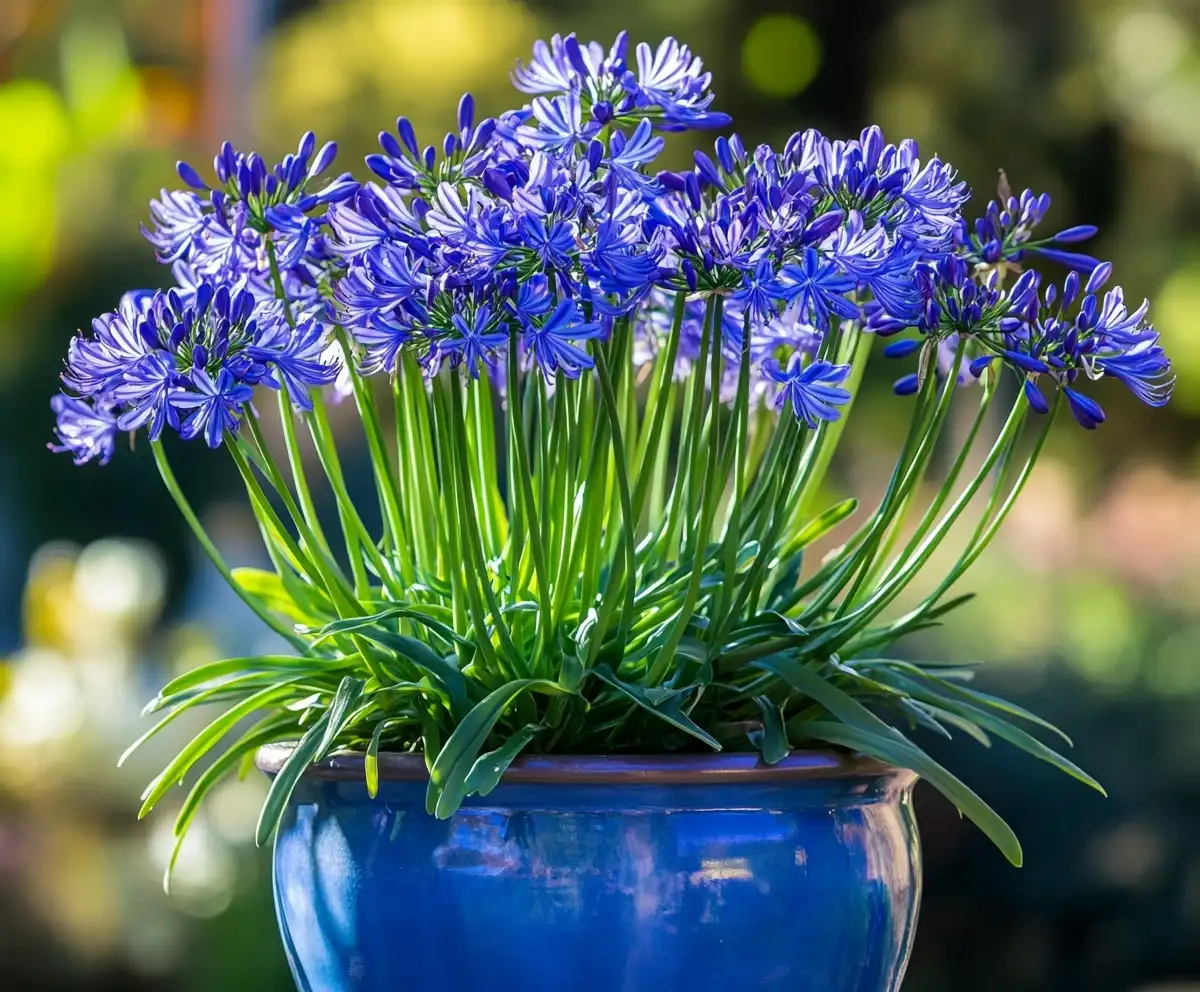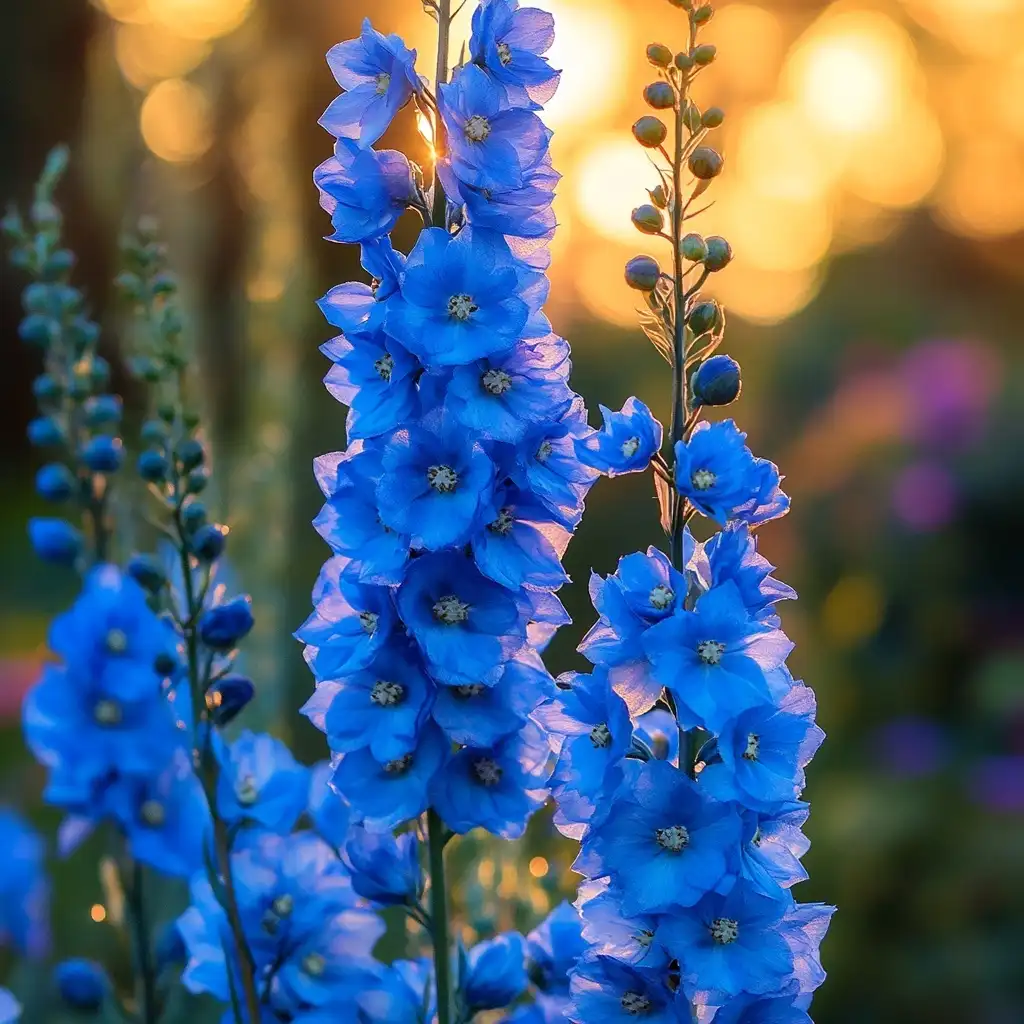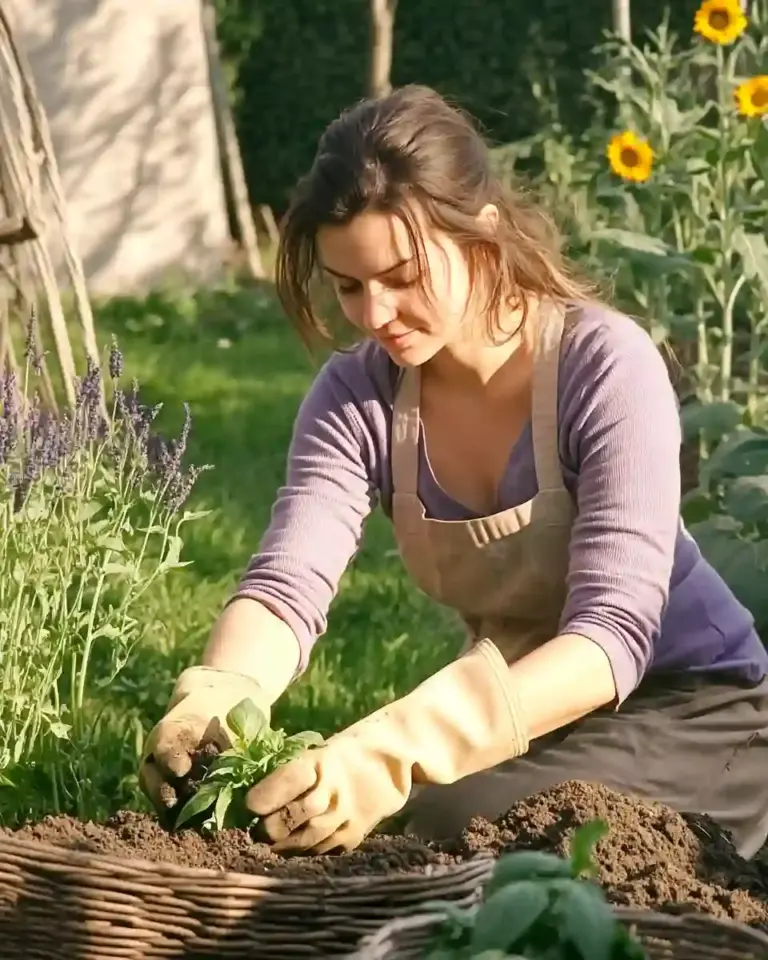Blue flowers add a soothing yet striking touch to any garden, standing out beautifully against green foliage and warm-toned blooms. Whether you’re planning a cozy corner or a larger space, they pair perfectly with flower bed ideas for front yards or backyard flower gardens.
Beyond their beauty, blue blooms attract pollinators, making your garden both vibrant and eco-friendly. From perennials to pond-friendly plants, these flowers bring a calm elegance to any landscape.
Table of Contents
1. Delphinium
Tall, regal, and undeniably striking, Delphinium stands among the most iconic blue flowers in garden design. These perennials are known for their towering spires covered in densely packed blossoms that range from sky blue to deep indigo.
Delphiniums can grow up to four feet tall, making them ideal for back borders or as dramatic vertical elements in flower beds. They prefer full sun and rich, well-drained soil, and they benefit from staking to support their height during wind and rain.
For a truly captivating display, plant them in clusters along fences or walls. Their vibrant blooms not only provide a stunning focal point but also attract hummingbirds and butterflies, making your garden come alive with movement and color.
Quick Tips:
- Grow in full sun
- Requires support when mature
- Blooms in early to mid-summer
- Attracts pollinators like bees and hummingbirds
2. Bluebell (Hyacinthoides non-scripta)

Few blue flowers are as enchanting as the woodland-native Bluebell. Known for its bell-shaped blooms and delicate arching stems, Bluebell carpets forest floors across Europe in spring, creating waves of soft blue that seem almost ethereal.
In gardens, Bluebells thrive in shaded or partially shaded areas, especially beneath trees or along hedgerows. They naturalize easily, spreading over time to form dense, flowering colonies. Their sweet fragrance adds to their charm, making them both visually and aromatically pleasing.
Ideal for cottage or woodland-style gardens, Bluebells require little maintenance once established. Just ensure the soil remains moist but well-drained, and they’ll reward you with a sea of color every year.
Quick Tips:
- Plant in shade or dappled sun
- Great for naturalizing under trees
- Blooms in mid to late spring
- Avoid disturbing once established
3. Blue Hydrangea
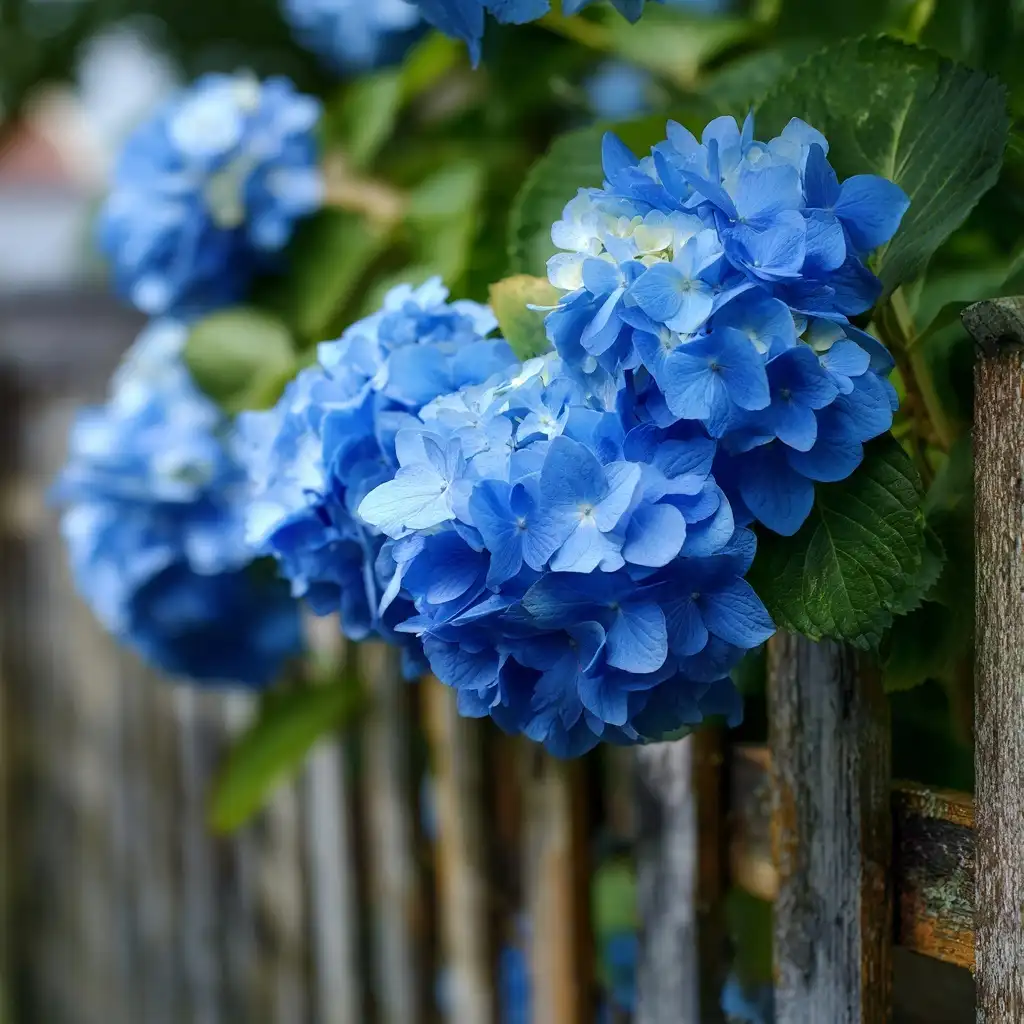
Among all blue flowers, the Blue Hydrangea is perhaps the most dramatic. With its massive globe-like blooms and lush green foliage, it brings bold color and soft texture to any garden setting. The most fascinating aspect? These blooms can shift color based on soil pH—acidic soils produce vivid blue, while alkaline conditions lean toward pink.
Blue Hydrangeas thrive in partial shade and prefer consistently moist, well-drained soil. They’re perfect for foundation plantings, shaded borders, or as elegant centerpieces in garden beds. Their long-lasting blooms appear in summer and often last well into fall, making them a favorite for gardeners seeking extended color.
For best results, amend your soil to maintain a lower pH and use aluminum sulfate to intensify the blue hue. Their romantic appeal works beautifully in formal gardens or mixed with pastel-colored companions.
Quick Tips:
- Prefers partial shade and moist soil
- Adjust soil pH for deeper blue tones
- Blooms from early summer through fall
- Works well in borders or containers
4. Agapanthus (African Lily)
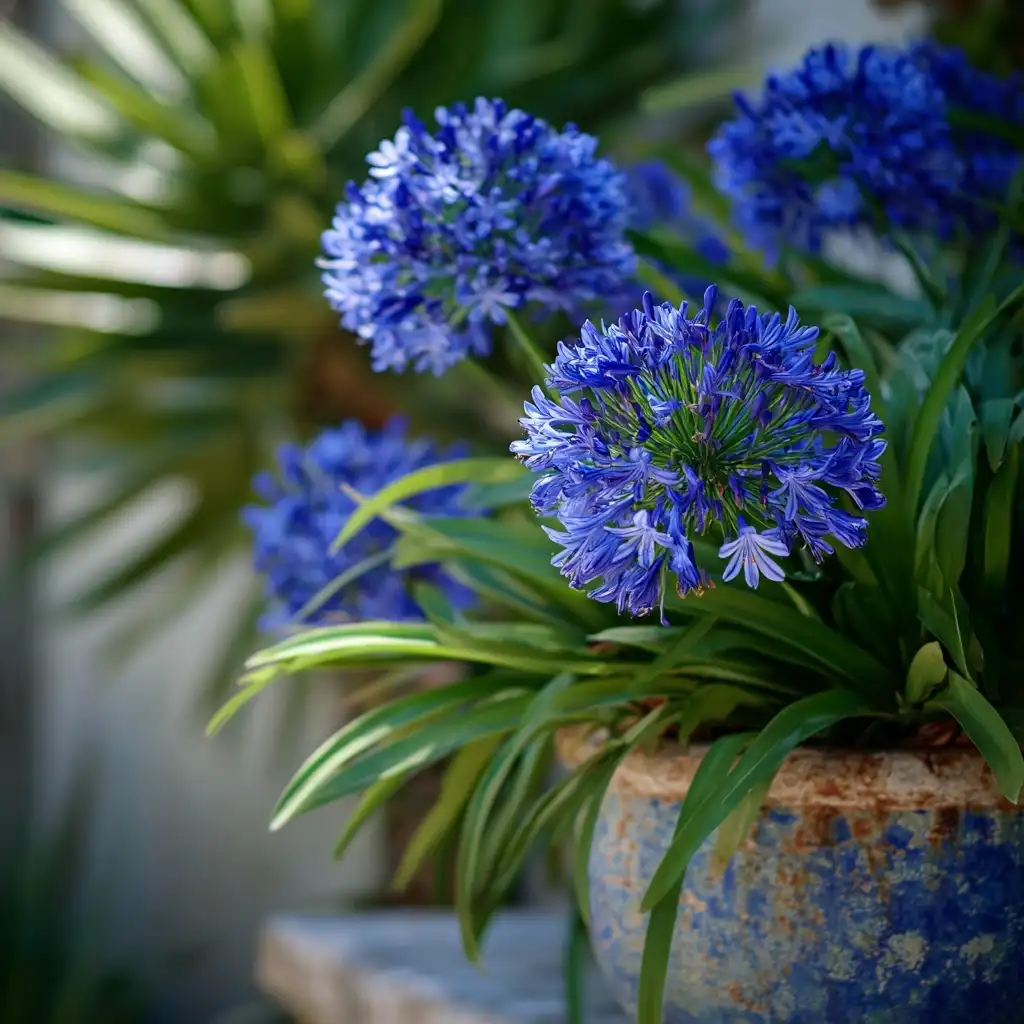
Agapanthus, also known as African Lily, is a standout among blue flowers for its graceful structure and bold floral globes. Rising from strappy green foliage, its tall stalks hold clusters of star-shaped blue blooms that sway beautifully in the breeze, adding vertical interest and a touch of the tropics to your garden.
These sun-loving perennials flourish in well-drained soil and require minimal water once established. Their drought tolerance makes them ideal for xeriscaping or low-maintenance borders. Blooming from late spring to mid-summer, Agapanthus is often used to line walkways, edge patios, or add height to mixed beds.
Thanks to their architectural form, they pair beautifully with ornamental grasses and other spiky perennials, creating dynamic visual contrast.
Quick Tips:
- Loves full sun and well-drained soil
- Drought-tolerant once established
- Blooms from late spring to summer
- Great for borders, walkways, or containers
5. Bluebell Creeper (Sollya heterophylla)
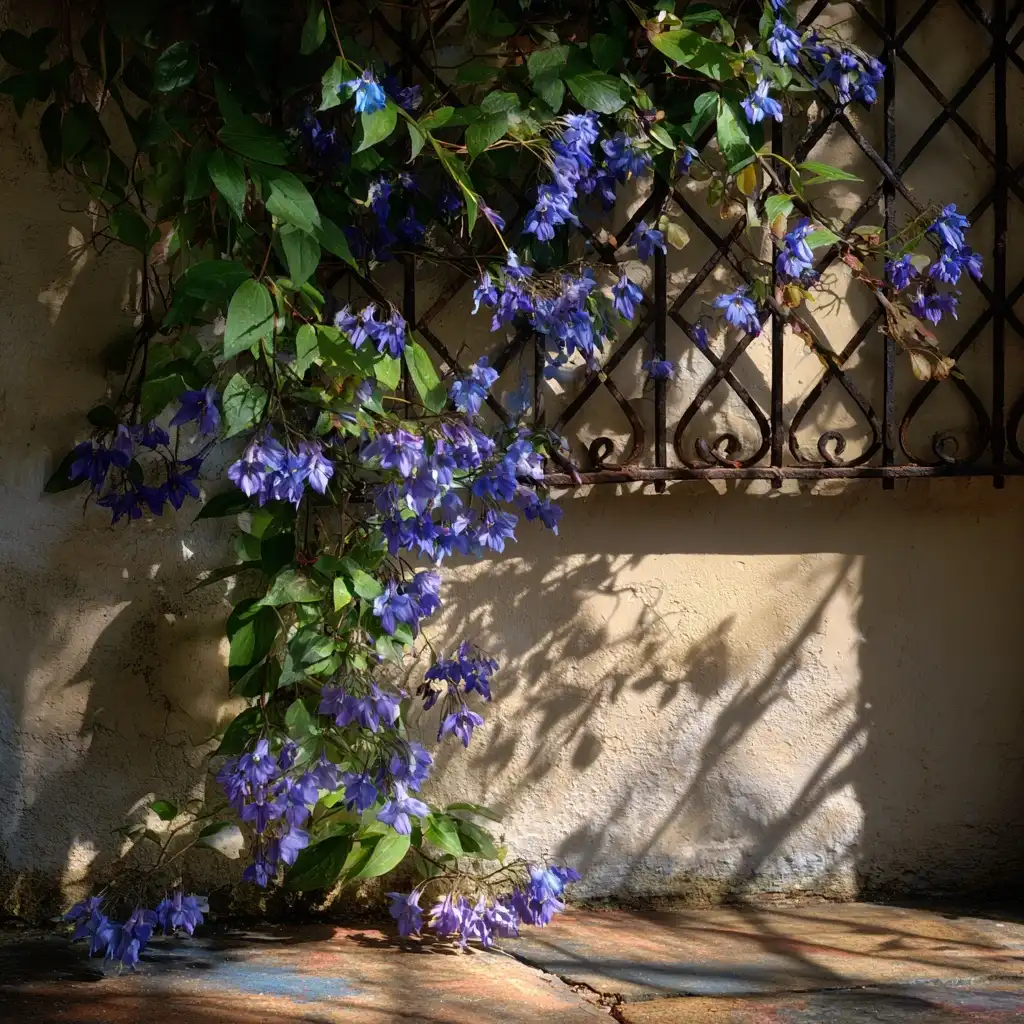
Delicate yet full of character, the Bluebell Creeper is a lesser-known gem among blue flowers. This dainty, twining perennial features small, bell-shaped blue blossoms that bloom continuously through summer, creating a charming cascade over trellises, fences, or container edges.
Native to Australia, it thrives in warm, sunny spots with well-drained soil. It can be grown as a ground cover or trained to climb, depending on your garden layout. While not frost-tolerant, it works beautifully as a seasonal container plant in cooler climates or a perennial in warmer zones.
Its trailing nature, combined with a steady bloom cycle, makes it a versatile choice for gardeners seeking color, movement, and pollinator appeal all season long.
Quick Tips:
- Ideal for full sun to partial shade
- Blooms from spring through late summer
- Excellent in hanging baskets or climbing on trellises
- Attracts bees and other beneficial insects
6. Cornflower (Centaurea cyanus)
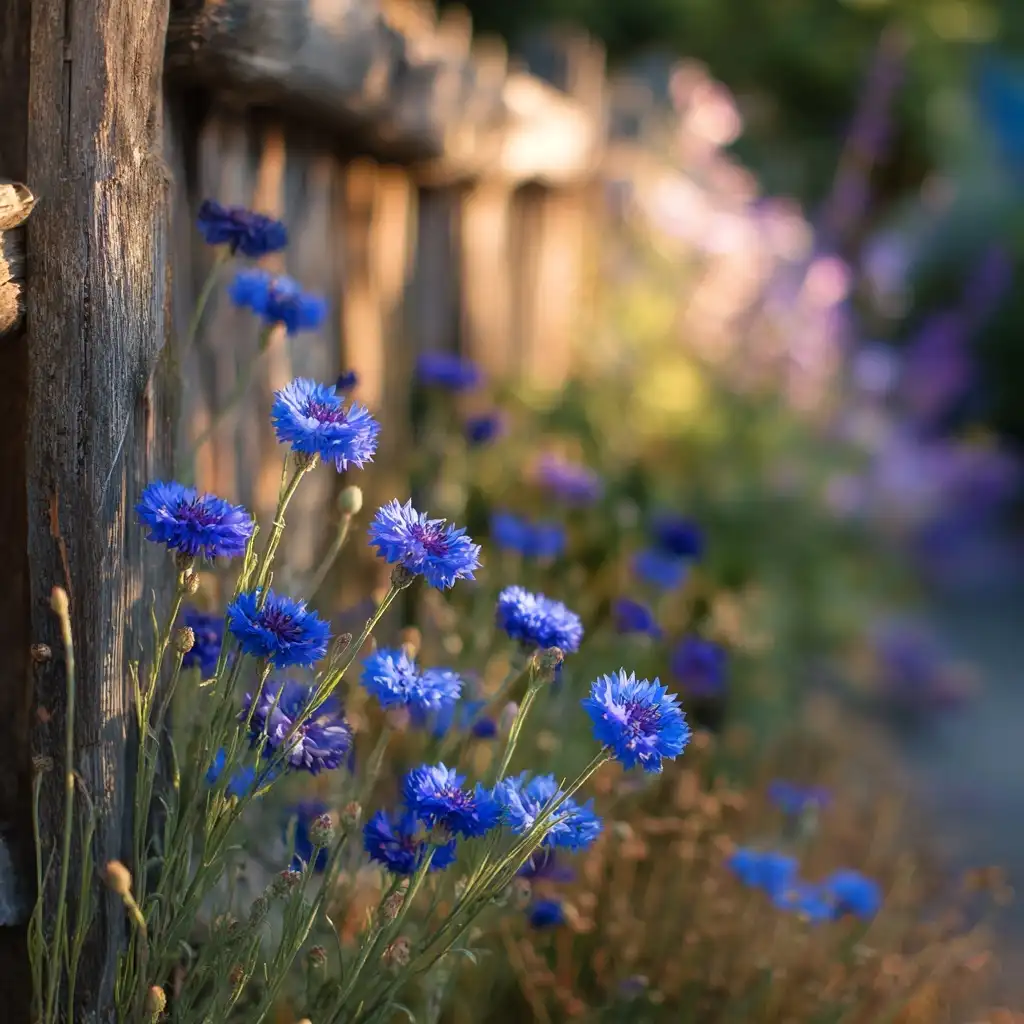
A classic cottage garden favorite, the Cornflower stands out among blue flowers with its vivid, true-blue hue and uniquely fringed petals. Sometimes called “Bachelor’s Button,” this annual adds a rustic charm to any garden and is especially loved by bees and butterflies.
Cornflowers thrive in poor to average soil and prefer full sun, making them an excellent choice for wildflower meadows, pollinator gardens, or low-maintenance borders. They’re also ideal for cut flower arrangements thanks to their long, sturdy stems and excellent vase life.
These flowers self-seed easily, so once established, they often return year after year with little effort. Their cheerful blooms appear in early to mid-summer and blend well with poppies, cosmos, and other informal garden plants.
Quick Tips:
- Loves full sun and lean, well-drained soil
- Blooms in early to mid-summer
- Great for pollinator gardens and cut flowers
- Self-seeds for naturalized displays
7. Balloon Flower (Platycodon grandiflorus)

Among blue flowers, the Balloon Flower adds a whimsical twist. Named for its unique balloon-like buds that puff up before blooming, this perennial surprises and delights as the buds burst open into star-shaped blue blossoms.
These resilient plants thrive in a variety of soil types and prefer full sun to partial shade. Once established, they’re drought-tolerant and low maintenance, making them ideal for busy gardeners. Their upright growth and tidy clumps make them perfect for borders, rock gardens, or mixed perennial beds.
Balloon Flowers bloom from mid-summer into fall, offering late-season color when many other plants begin to fade. Deer-resistant and pollinator-friendly, they bring both charm and practicality to your garden.
Quick Tips:
- Prefers full sun but tolerates light shade
- Blooms mid-summer through fall
- Drought-tolerant and deer-resistant
- Deadhead to encourage repeat blooming
8. Blue Star Creeper (Isotoma fluviatilis)
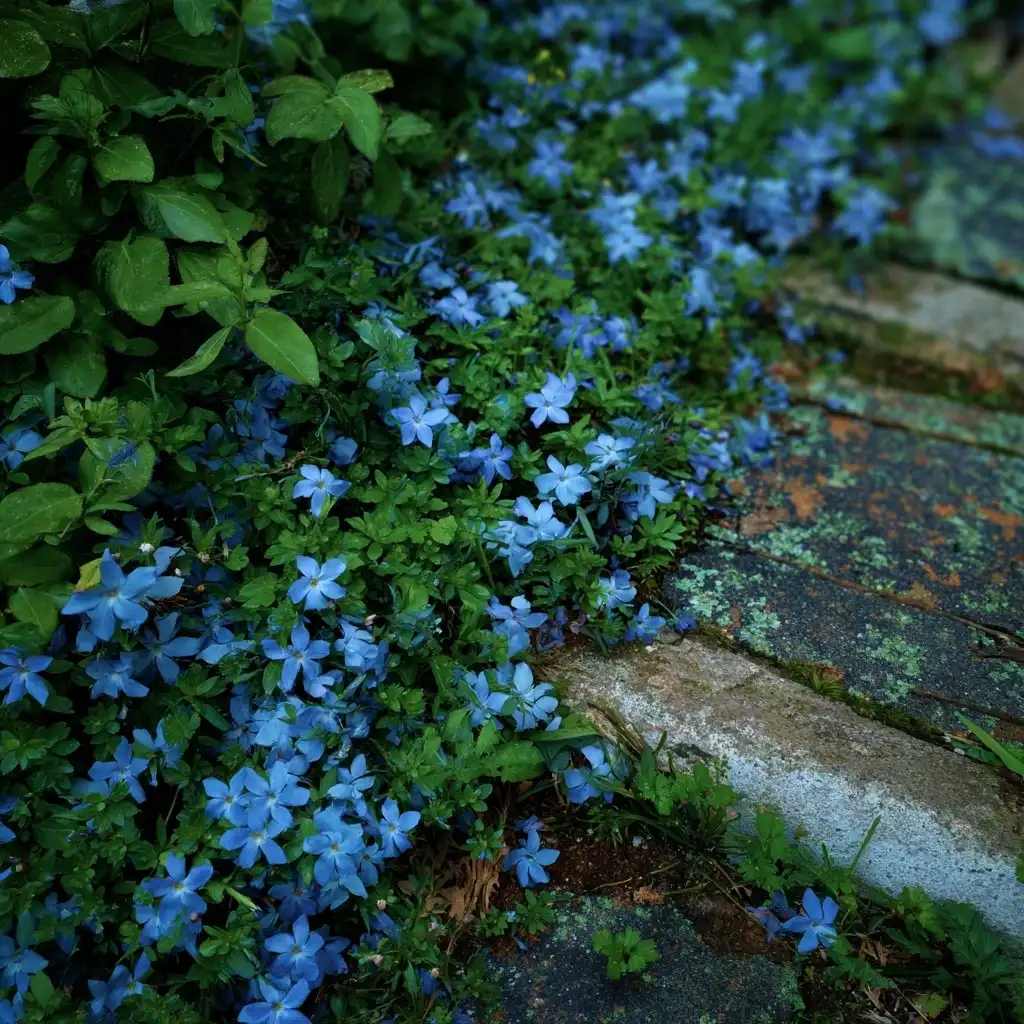
If you’re looking for low-growing blue flowers that can double as ground cover, Blue Star Creeper is a stellar choice. This mat-forming perennial produces tiny, star-shaped blooms that create a soft, sky-blue carpet in sunny or lightly shaded areas.
Ideal for planting between stepping stones, along walkways, or at the front of borders, Blue Star Creeper is resilient enough to handle light foot traffic. Its dense growth suppresses weeds while adding a splash of color that lasts from spring through summer.
In addition to its visual appeal, it’s incredibly low maintenance—once established, it only needs occasional watering and minimal upkeep.
Quick Tips:
- Thrives in full sun to partial shade
- Handles light foot traffic; perfect for pathways
- Blooms from spring into summer
- Spreads quickly and suppresses weeds
9. Lobelia
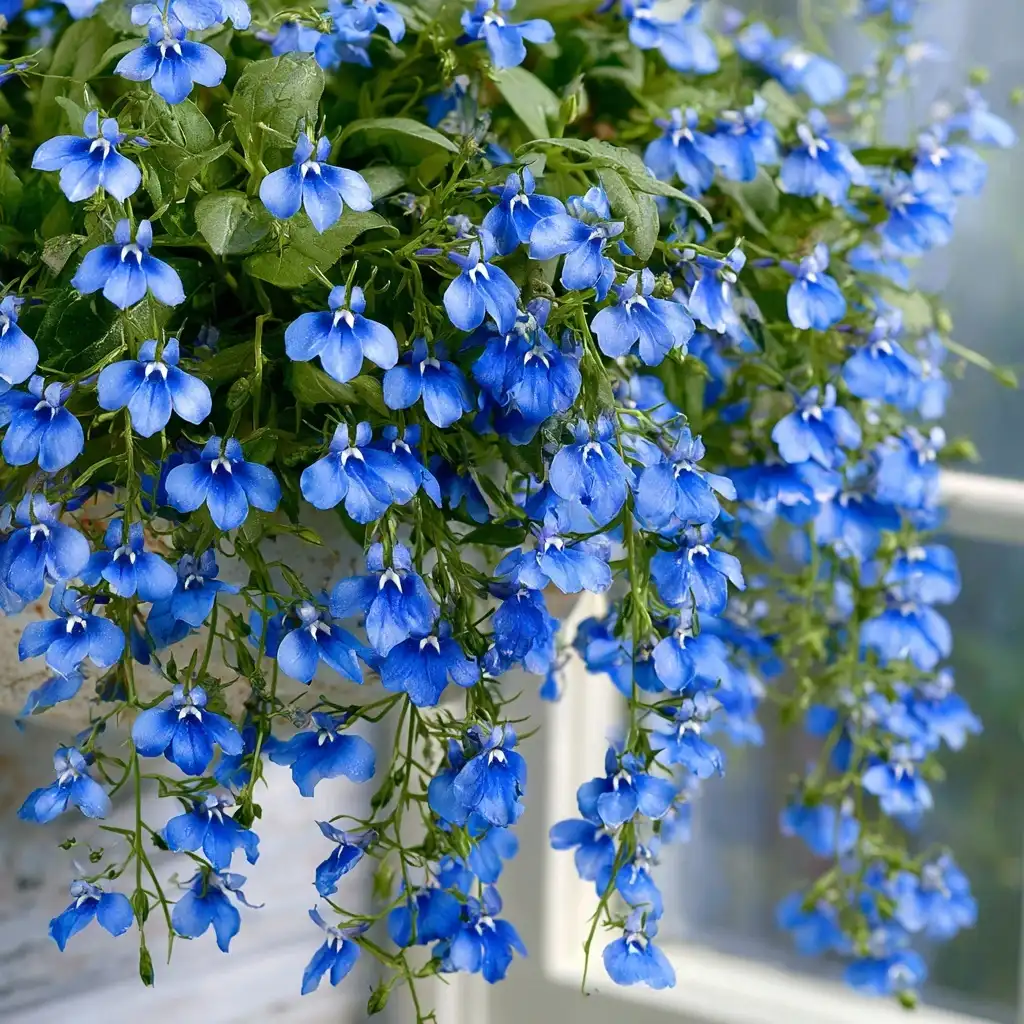
Lobelia offers one of the most intense shades among blue flowers, with its vibrant, almost electric blooms that cascade beautifully from containers, window boxes, or garden borders. This cool-season annual thrives in mild climates and brings rich color to areas that often go overlooked—like shady corners or hanging baskets.
Compact and easy to grow, Lobelia prefers well-drained, moist soil and cooler temperatures. It works beautifully when paired with white, silver, or yellow flowers for a high-contrast planting scheme that catches the eye.
Though most commonly grown as an annual, some varieties of Lobelia can be perennial in warmer zones. Regular deadheading can extend its blooming season, offering continuous color from spring into early summer.
Quick Tips:
- Prefers cooler weather and partial shade
- Ideal for hanging baskets and borders
- Blooms from spring to early summer
- Water regularly and deadhead to prolong flowering
10. Blue Flax (Linum perenne)
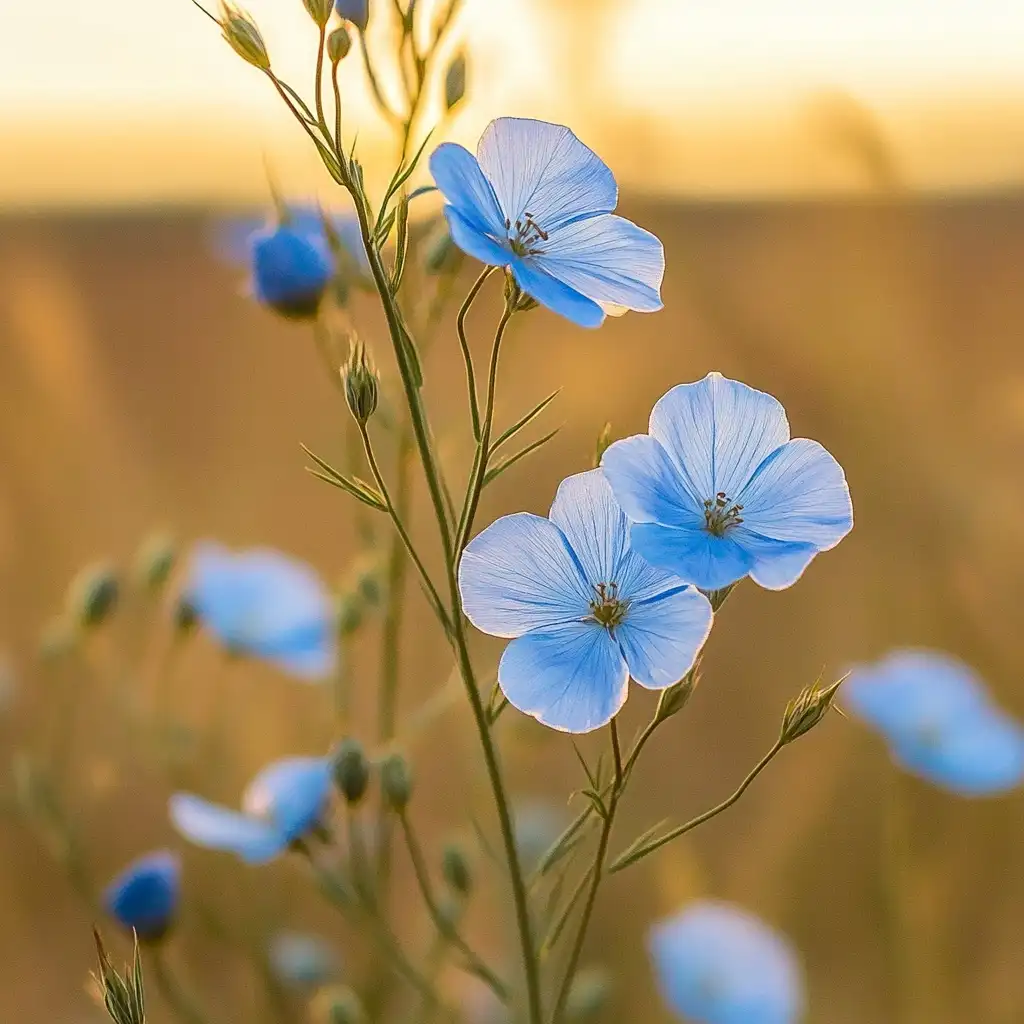
Graceful and understated, Blue Flax is a perennial favorite among gardeners who value natural beauty and movement. These blue flowers grow on slender, wiry stems and bloom with delicate, sky-blue petals that flutter in the breeze, creating a soft, airy presence in garden beds and wildflower meadows.
Blue Flax thrives in full sun and well-drained soil. It’s drought-tolerant and self-seeding, making it ideal for low-maintenance landscapes. Though each individual bloom lasts only a day, the plant continues to produce new flowers daily throughout summer.
Its fine-textured foliage and soft color make it a perfect companion for poppies, daisies, and ornamental grasses, especially in prairie-style or cottage gardens.
Quick Tips:
- Requires full sun and well-drained soil
- Blooms continuously from late spring through summer
- Excellent for meadows, slopes, or naturalized areas
- Attracts bees and other pollinators
11. Periwinkle (Vinca minor)
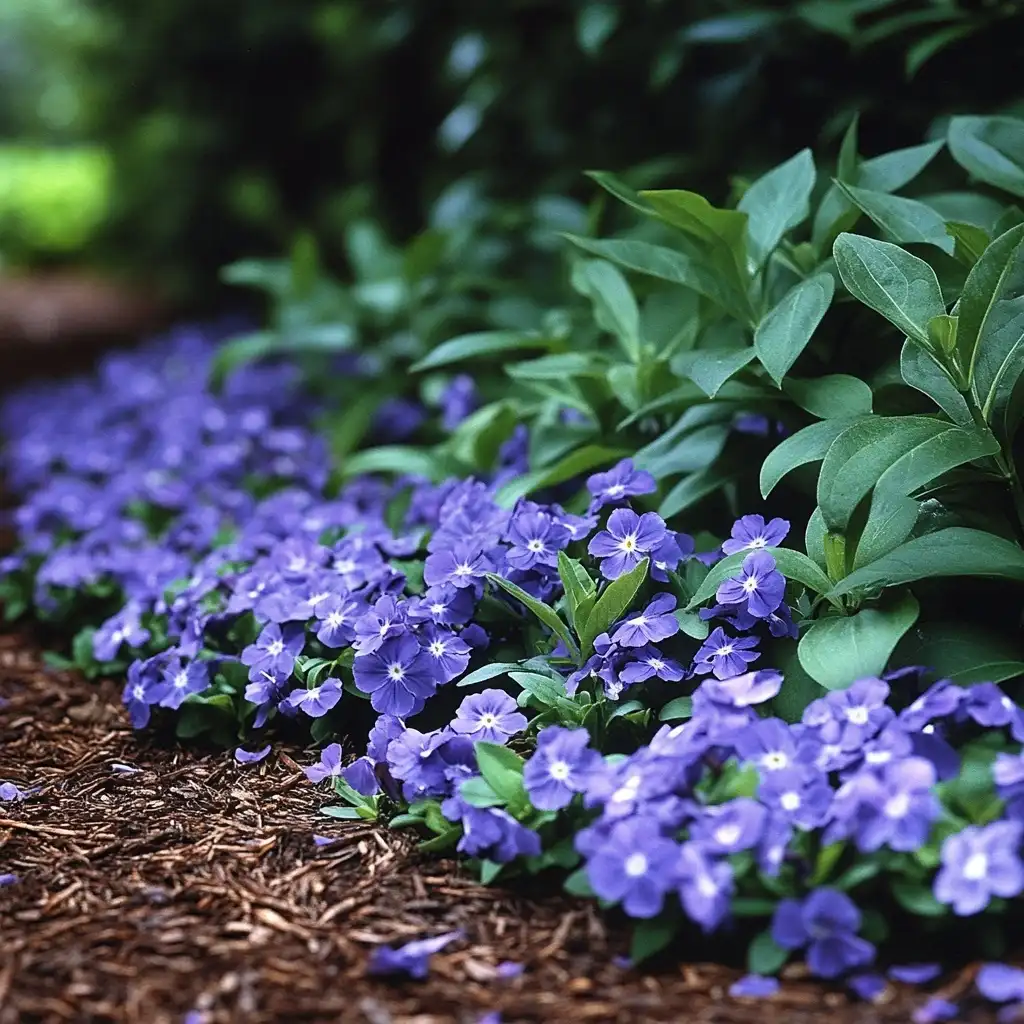
Periwinkle, or Vinca minor, is a tough, evergreen ground cover that stands out with its glossy green foliage and charming blue flowers. Blooming in early spring and sporadically through summer, it creates a dense mat of color and greenery that keeps your garden looking lively even during off-peak seasons.
Perfect for shaded areas, under trees, or along slopes where grass struggles to grow, Periwinkle thrives in a variety of soil types. Its trailing vines root as they spread, quickly covering bare spots and helping to suppress weeds.
While it’s low-maintenance and drought-tolerant once established, it’s best to monitor its growth, as it can become invasive in some regions. With the right placement, though, it’s a beautiful and practical solution for challenging spaces.
Quick Tips:
- Grows well in shade or partial sun
- Blooms mainly in spring, with occasional summer flowers
- Excellent for erosion control on slopes
- Low-maintenance but can spread aggressively
12. Plumbago (Ceratostigma willmottianum)
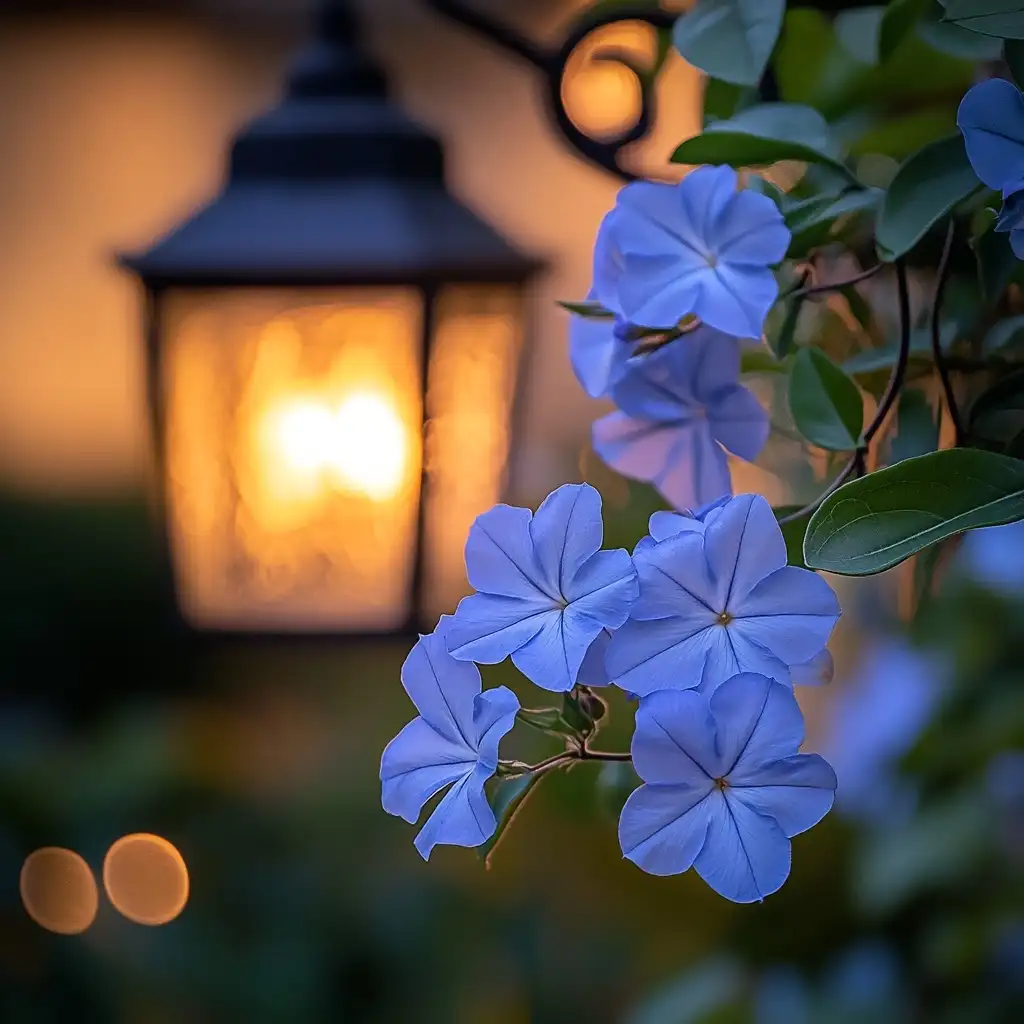
If you’re searching for blue flowers that offer late-season color, Plumbago—also known as Ceratostigma willmottianum—is a must-have. This woody perennial or subshrub produces rich cobalt-blue blooms from late summer into fall, just as many other flowers begin to fade.
Plumbago thrives in full sun and well-drained soil. It’s both heat- and drought-tolerant, making it a great fit for low-maintenance or xeriscaped gardens. Its reddish stems and burgundy-tinted foliage in autumn add bonus seasonal interest, creating a stunning contrast against the blue blooms.
Perfect for borders, foundation plantings, or mixed shrub beds, Plumbago offers both long-lasting color and a graceful, mounding habit that softens garden edges.
Quick Tips:
- Full sun preferred, but tolerates light shade
- Blooms from late summer through fall
- Drought-tolerant and low-maintenance
- Adds fall color with red-tinged foliage
13. Forget-Me-Not (Myosotis sylvatica)
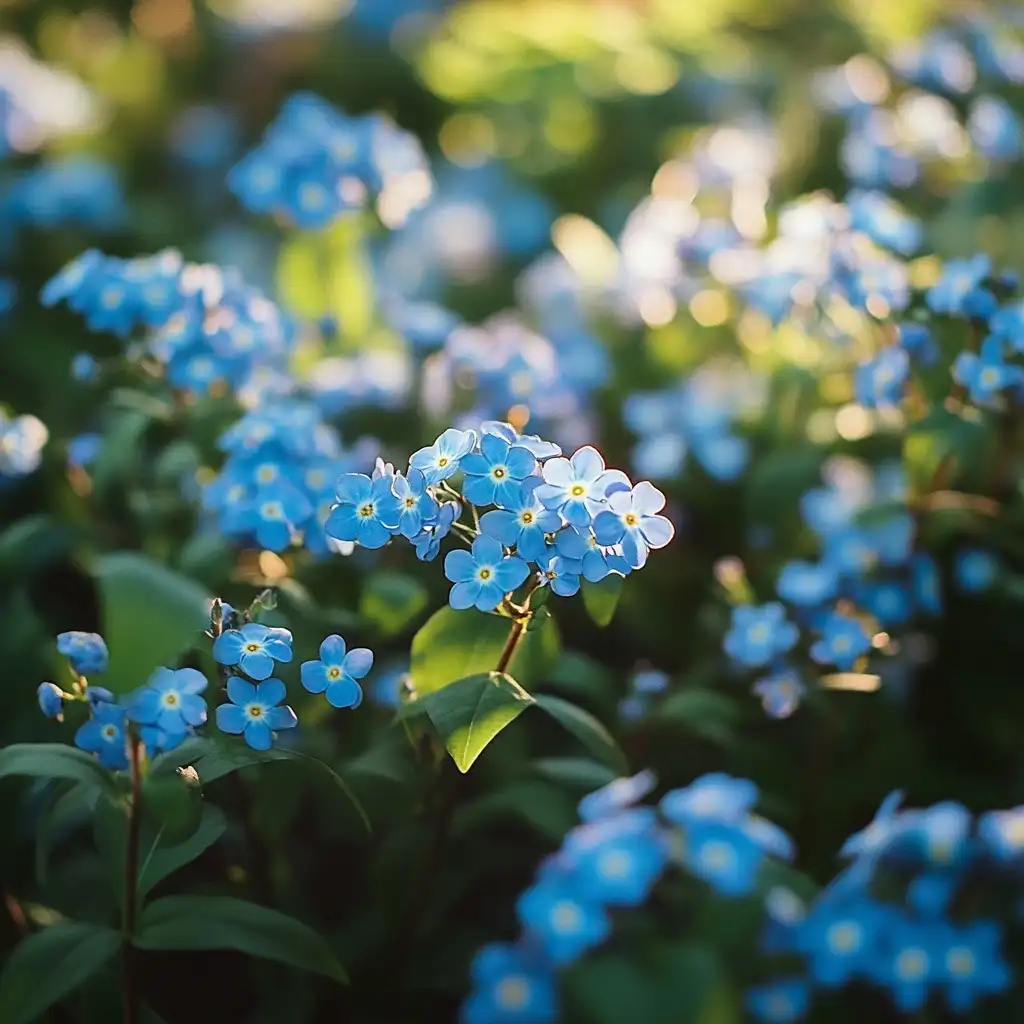
Few blue flowers carry as much nostalgic charm as the Forget-Me-Not. These small, dainty blossoms with yellow centers form dense carpets of soft blue during spring, lending a fairytale-like quality to shaded garden areas.
Perfect for woodland gardens, streambanks, or the edges of shady borders, Forget-Me-Nots thrive in moist, well-drained soil and dappled light. They’re short-lived perennials or biennials but often self-seed generously, returning each year with minimal effort.
Forget-Me-Nots pair beautifully with ferns, hostas, and larger shade-loving perennials. Their ability to naturalize makes them ideal for gardeners seeking a soft, layered look with seasonal color and minimal fuss.
Quick Tips:
- Prefers partial shade and moist, cool soil
- Blooms in mid to late spring
- Self-seeds readily for easy naturalization
- Ideal for woodland gardens or shady borders
14. Chia Flower (Salvia hispanica)
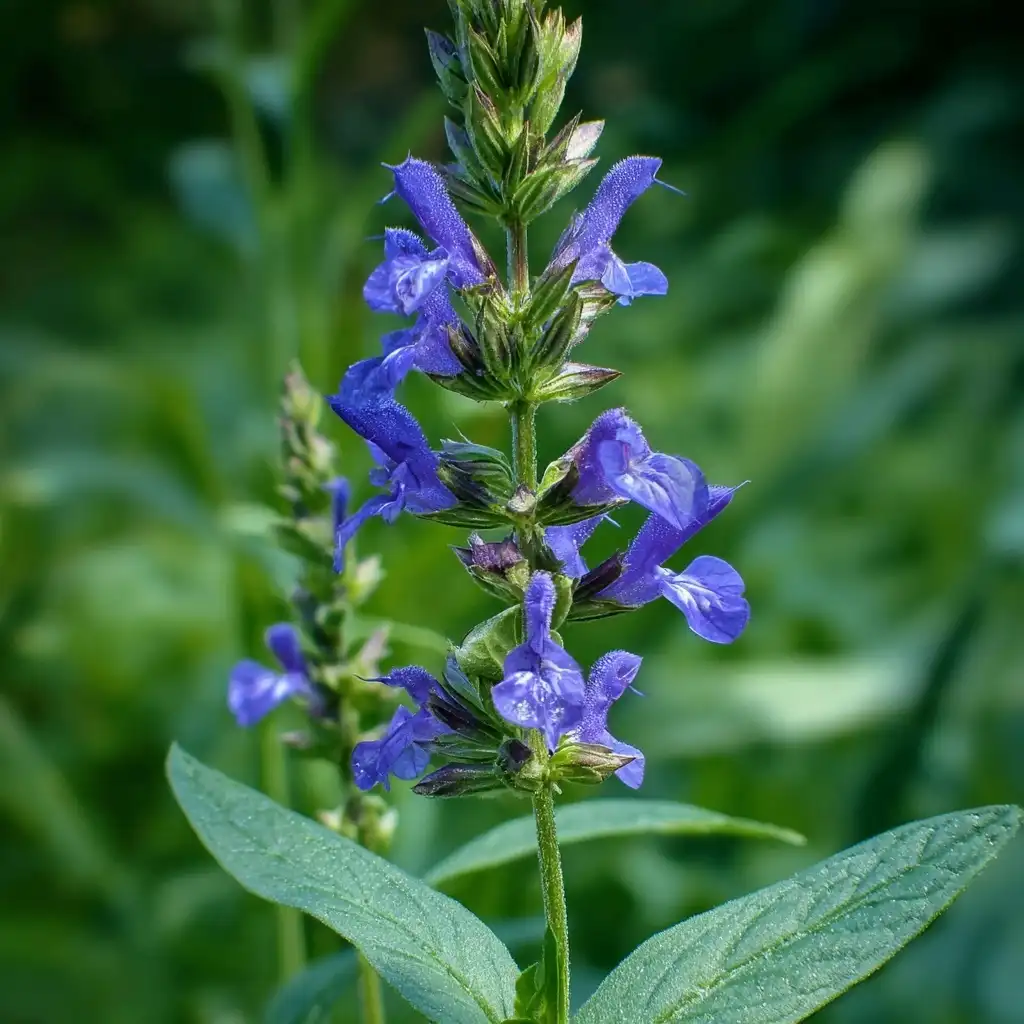
Most people recognize Chia for its edible seeds, but gardeners know that the Chia Flower also earns a spot among the most useful and attractive blue flowers. This fast-growing annual produces tall spikes of deep blue to purplish blooms that not only look stunning but also attract a wide range of pollinators.
Chia thrives in full sun and well-drained soil, making it ideal for warm climates and drought-tolerant landscapes. Its upright growth and flowering spikes bring structure to garden beds, while its eco-benefits—like feeding bees and yielding edible seeds—make it a multi-purpose favorite.
Grow it alongside other herbs and pollinator-friendly plants for a lively, productive garden that blends beauty and utility.
Quick Tips:
- Full sun and well-drained soil required
- Blooms mid to late summer
- Attracts bees, butterflies, and hummingbirds
- Produces edible seeds if left to mature
15. Blue Lotus (Nymphaea caerulea)
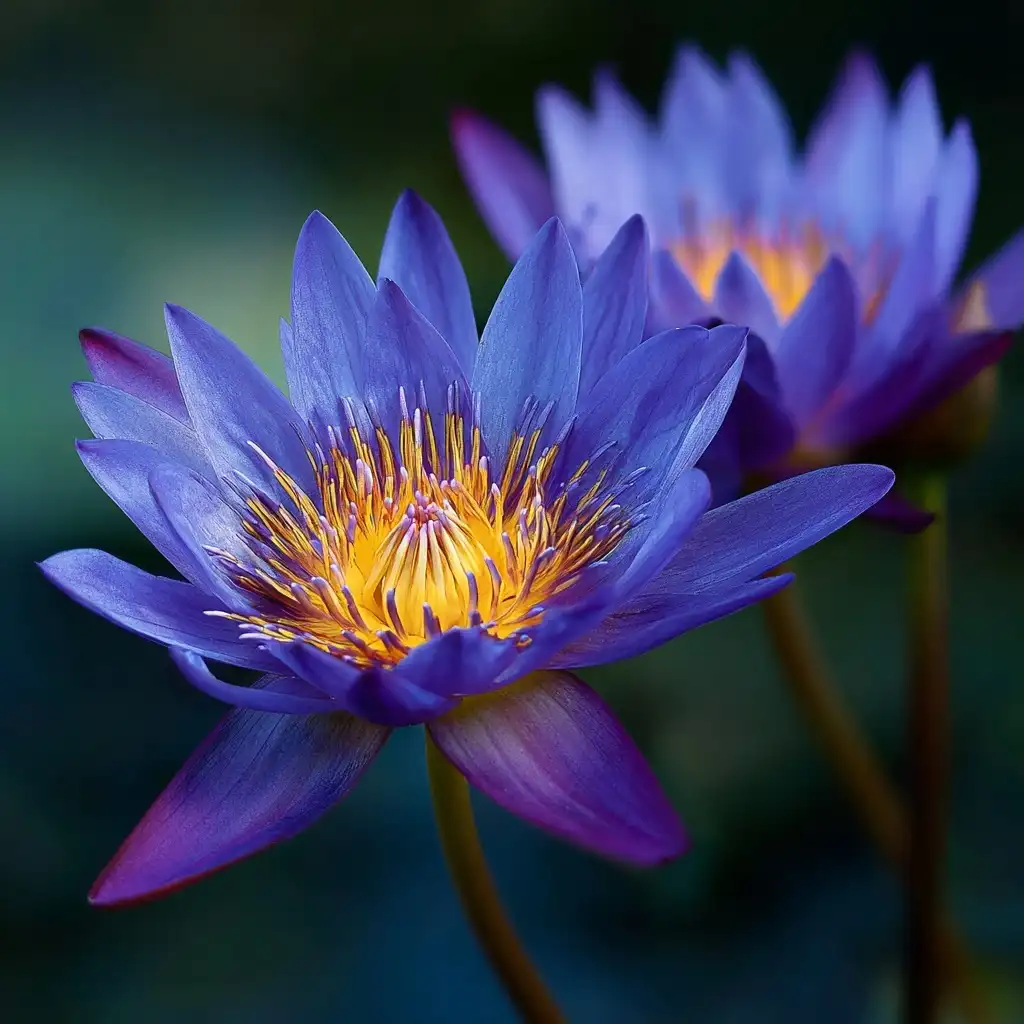
Exotic and serene, the Blue Lotus is a standout among blue flowers, especially for water gardeners. Native to Egypt and revered in ancient cultures, this aquatic plant floats its star-shaped, sky-blue blooms atop still waters, creating a tranquil, almost meditative garden focal point.
Ideal for ponds, water features, or large container gardens, the Blue Lotus requires full sun and warm temperatures to thrive. Its blooms open in the morning and close by afternoon, repeating the cycle through the blooming season from late spring to early fall.
In addition to its visual beauty, the Blue Lotus contributes to water health by providing shade, reducing algae, and offering habitat for beneficial insects.
Quick Tips:
- Needs full sun and warm, still water
- Blooms from late spring through fall
- Best for ponds or large containers
- Adds visual interest and supports pond ecosystems
FAQs About Blue Flowers
What are the most low-maintenance blue flowers?
Some of the easiest blue flowers to care for include Periwinkle, Blue Star Creeper, and Cornflower. These plants are tolerant of a range of conditions and require minimal upkeep once established.
Do blue flowers attract pollinators?
Absolutely. Many blue flowers, such as Lobelia, Delphinium, and Chia Flower, are magnets for bees, butterflies, and hummingbirds. Blue hues are particularly appealing to pollinators, making them a smart choice for wildlife-friendly gardens.
Can I grow blue flowers in shade?
Yes, several varieties of blue flowers thrive in shade or partial shade. Try Bluebell, Forget-Me-Not, or Periwinkle for areas with limited sunlight. These plants add color and vibrancy even in darker corners of the garden.
How can I keep the blue color in Hydrangeas?
To maintain or deepen the blue hue in Blue Hydrangeas, ensure your soil is acidic (pH below 6.0). Adding aluminum sulfate to the soil can help maintain that vivid blue tone.
Conclusion
Whether you’re designing a peaceful retreat, attracting pollinators, or simply adding depth to your flower beds, blue flowers bring unmatched beauty and tranquility to any garden. From delicate climbers to striking water blooms, there’s a blue variety for every style and setting. You can even enhance their effect by pairing them with thoughtfully planned flower garden ideas or complementing them with stunning white stone landscaping for added contrast.
For season-long impact, mix early, mid, and late-blooming varieties—an approach that mirrors the principles behind low-maintenance perennial gardens. Whether you’re working in a container space, cottage garden, or water feature, choosing the right combinations for your climate and layout will help your garden thrive.
Let these cool-toned blooms be the centerpiece of your outdoor sanctuary—and watch as your space transforms into a vibrant, colorful paradise.
🌿 Love gardening inspiration? Follow me on Pinterest for bold plant ideas, tips, and seasonal color!
More Posts
